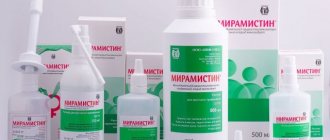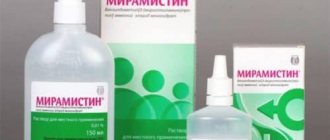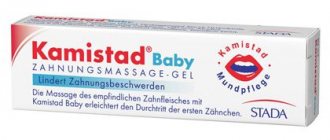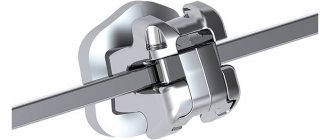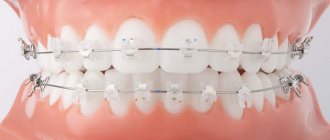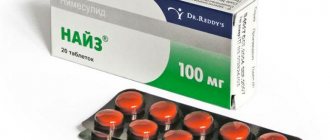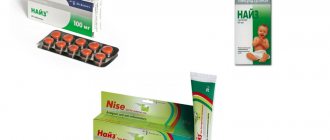History of the invention of drugs
Chlorhexidine is an antiseptic. It was invented by British scientists in the early 30s. Since that time, the antiseptic has become a real salvation for most doctors. The drug was considered especially valuable in Africa and Asian countries. Volunteers actively used it to treat people. Chlorhexidine was also used in the Soviet Union. Even today, this medicine can be found in pharmacies. At the same time, many consider Chlorhexidine to be a domestic remedy, but this is a mistaken opinion.
Domestic scientists invented Miramistin. This happened in 1970. The USSR government set the project group on space technologies the task of creating a universal antiseptic. It was planned to be used at orbital stations. The spacecraft is characterized by a closed space, high levels of humidity and constant temperature conditions.
Such conditions contributed to the proliferation of pathogenic fungi and microorganisms. Existing remedies turned out to be ineffective because they did not inhibit some bacteria. This experiment ended successfully. The antiseptic was named BH-14. In the 90s, the drug entered all pharmacies and gained enormous popularity. Pharmaceutical companies in other countries do not produce drugs based on miramistin. However, among foreign drugs there is its analogue - Octenisept.
Can chlorhexidine be substituted?
Miramistin is often compared with its closest antiseptic brother - Chlorhexidine.
Yes, indeed, their scope of application is almost similar , but they still have important differences .
In particular, the use of chlorhexidine is excluded for conjunctivitis and in ophthalmology in general .
Its contact with the eyes is so critical that it can cause severe burns to the mucous membrane of the eye.
You should know! The following distinctive features of these drugs can be identified:
- Unlike Miramistin, chlorhexidine has obvious side effects : allergies, itching, dermatitis. The use of chlorhexidine solution is contraindicated for people with a tendency to dermatitis and allergies.
- There is an opinion that Miramistin is good for treating viral infections , and chlorhexidine is still stronger as an antiseptic .
- Miramistin is an improved chlorhexidine and can be used as a full-fledged medicine, rather than just for sanitary purposes.
- Miramistin , objectively, is more expensive than Chlorhexidine . If chlorhexidine costs a maximum of 30 rubles, then Miramistin spray will cost from 350-380 rubles per 150 ml, but, obviously, there is something to overpay for.
It is difficult to downplay its advantages over its more affordable counterpart.
It is necessary to understand that each product has its own indications for use . You cannot take and replace one drug with its analogue without consulting a doctor.
If you decide to replace Miramistin with an analogue - chlorhexidine, you must first obtain the appropriate prescription.
Reference! This is explained by the fact that it may be necessary to change the course, dosage, and perhaps chlorhexidine is completely contraindicated for use.
Being frivolous in this matter can have undesirable health consequences.
What are the differences?
Many patients are interested in whether Miramistin can be replaced with Chlorhexidine?
The antiseptic "Chlorhexidine" contains only one active component. That is, it is a monodrug. The product is produced in the form of an aqueous or aqueous-alcohol solution. It contains from 0.05 to 5% chlorine, which is toxic to pathogens and the human body.
Terzhinan, cheaper analogues, suppositories, list of cheap Russian analogues, drug prices
The drug is highly effective, but it also has many disadvantages. In this regard, domestic scientists decided to create a safer product. Thanks to these works, Miramistin appeared.
Release forms. When that?
Chlorhexidine
A 0.5% aqueous solution is suitable for purulent wounds, bedsores, and trophic ulcers.
a 0.5% alcohol solution for disinfecting hands if people, for example, go on a trip, to disinfect instruments and injection sites.
In all other cases - 0.05% aqueous solution.
Miramistin
With a gynecological attachment - for the treatment and prevention of vulvitis, vulvovaginitis, when there is itching, discomfort in the vagina, discharge from the genital tract.
Miramistin with a urological applicator complete with a spray nozzle is especially suitable for a male traveler or who frequently goes on business trips.
Miramistin with a spray nozzle is convenient for irrigating the throat, nose, mouth, treating wounds, and skin.
Miramistin in a 500 ml package is the optimal form of release for treating wounds, burns, bedsores, and trophic ulcers that have a large area.
Main difference
"Miramistin" is the same monopreparation based on water and benzyldimethyl ammonium chloride monohydrate. It does not contain any additives or toxic components. This is precisely what distinguishes Miramistin from Chlorhexidine. At first, this drug was actively used only in two areas: obstetrics and dermatology.
The main difference between the drugs is that Miramistin:
- – as safe as possible for the body;
- – can be used not only in the field of dermatology.
The composition of the drugs is completely different. Miramistin was developed for disinfection in space conditions. It helped cope with viruses and pathogenic microbes. Chlorhexidine was used to disinfect surgical instruments, and also to treat medical personnel before surgery.
Today, many pharmacists offer to buy Chlorhexidine instead of Miramistin. Both drugs are actively prescribed in the field of urology and gynecology. Antiseptics are used to disinfect wounds and skin burns. The drugs are also used in the treatment of sexually transmitted diseases. "Chlogrexidine" can indeed be considered an analogue of "Miramistin". Its small concentrations help cure inflammation in the oral cavity.
But “Miramistin” is used to treat inflammation of the respiratory organs and sinusitis. It can be prescribed for inflammation in the joints. Chlorhexidine is used to impregnate sanitary napkins; the drug is used to treat the clothes of patients in hospitals. Taking this into account, we can say that the domestic antiseptic has a wider range of uses.
Miramistin - main characteristics
The active substance of the solution has a long and complex name: benzyldimethyl [3-(myristoylamino)propyl] ammonium chloride monohydrate.
This is the formula presented in the official instructions. Only purified water acts as an auxiliary substance. The bottle with the solution indicates the percentage composition - 0.01%. Miramistin actively destroys streptococcal and staphylococcal microflora, has a detrimental effect on anaerobic and aerobic infections and other microorganisms. Ascomycetes and yeasts are also sensitive to the action of miramistin.
Studies of the drug have shown that Miramistin is active against VIL, herpes, chlamydia, Trichomonas, treponema, and gonococcus.
It is important to note that Miramistin is able to resist hospital-acquired strains, such as Staphylococcus aureus. The danger of strains that “live” in hospital conditions lies in their resistance, i.e. resistance to antibacterial agents. They are capable of causing severe purulent processes, including septic conditions. This picture often develops in weakened patients who spend a long time in a hospital setting.
Thanks to Miramistin, purulent discharge from the wound is adsorbed, the affected area is dried, cleansed, tissues are regenerated, and local immunity is restored.
Also, as a sanitation, miramistin is used by medical personnel if a worker is found to be carrying an infection in the nasopharynx.
What are the similarities?
When choosing between two drugs, it is important to determine not only the differences, but also the similarities. According to doctors, Miramistin and Chlorhexidine are similar in the following parameters:
- – have an antiseptic and antibacterial effect;
- – destroy the shells of pathogenic microorganisms;
- – healing properties are preserved even when treating purulent and bloody wounds;
- – bacteria and fungi are very sensitive to these antiseptics;
- – both drugs are actively used for skin disinfection.
Which pills are best for lowering blood pressure? Secrets of doctors!
It is recommended that you consult your doctor before using any of these antiseptic medications.
Analogs for children
Pediatricians recommend using Malavit to replace miramistin and chlorhexine. This is a unique natural preparation that includes active bio-complexes of silver, copper, mumiyo and other natural substances.
Malavit is prescribed in otolaryngology, gynecology, and dentistry. The product can also be used to treat affected areas of the skin (wounds, burns, bites, etc.).
Malavit has anti-inflammatory, antibacterial, decongestant, antipruritic and antifungal effects. The drug, according to official instructions, is used after the age of five. In practice, it is used earlier, after first reducing the concentration of the solution.
The drug Decasan is also suitable as an analogue. It is capable of destroying bacterial and fungal microflora and preventing the proliferation of viral infections. The largest range of applications for dekasan is diseases of the oral cavity.
They are often inhaled to treat infectious and inflammatory diseases of the throat (sore throat, tonsillitis, pharyngitis).
Also in children's practice, Lugol, chlorophyllipt (alcohol and oil solution), ingalipt, Gorlospas, faringosept and decatylene tablets, and other agents are often used.
Manifestations of adverse reactions
“Miramistin” and “Chlorhexidine” are used to treat the skin and mucous membranes. Both drugs can cause allergies and even anaphylactic shock.
After using drugs on the nasal mucosa, the patient feels a burning sensation. With Miramistin it does not cause obvious discomfort and goes away quite quickly. But “Chlorhexidine” burns very strongly and even dries out the nasopharynx. The discomfort lasts a long time.
For angina, doctors often prescribe Chlorhexidine. After using it, the following occurs:
- – feeling of bitterness in the mouth;
- – irritation of the mucous membrane;
- – tooth enamel may change color;
- – stones form on the teeth;
- – taste qualities are lost.
For the treatment of throat diseases in pediatrics, it is better to use Miramistin.
Contraindications
Chlorhexidine:
- Increased sensitivity.
- Dermatitis.
Carefully:
- Children.
- Pregnant women.
- Nursing.
Miramistin
- Individual intolerance.
As for children, the drug’s website contains recommendations for using Miramistin from birth for diaper rash, the appearance of pustules on the skin, as well as for the treatment of stomatitis, pharyngitis, tonsillitis, tonsillitis, for the treatment of wounds, abrasions, and insect bites.
Important: do not put it in the throat of children under 3 years old to avoid laryngospasm!
Nothing is said about pregnant and lactating women, but given that the drug is not absorbed through the skin and mucous membranes and does not have a systemic effect, it can be used during pregnancy and lactation.
Conclusion:
Miramistin has a wider target audience.
Adverse reactions in the field of dentistry
Miramistin is the safest in the treatment of dental diseases. Even accidental ingestion of the product will not harm the patient.
Chlorhexidine can only be used to rinse your mouth or treat your teeth. Accidental ingestion of the product is strictly prohibited. If this happens, you need to urgently rinse the stomach or induce vomiting. After this, take enterosorbent. Adverse reactions of the drug:
- – changes the color of tooth enamel;
- – disrupts taste;
- – promotes the formation of stone on teeth.
Eye drops for cataracts, which are better?
Advantages and disadvantages of drugs
- Both remedies are equally effective. At the same time, Miramistin has a neutral taste, while Chlorhexidine has an unpleasant and bitter taste.
- "Miramistin" works as gently as possible, without irritating the mucous membranes. After using Chlorhexidine, a burning sensation appears.
- The use of “Chlorhexidine” is prohibited during pregnancy, lactation, and also for children. Miramistin has no such contraindications.
- Chlorhexidine should not be swallowed. Even a small amount of a substance can cause irreversible consequences. In such a situation, you urgently need to rinse your stomach. Accidental ingestion of Miramistin is safe for the patient’s health.
The presence of obvious advantages affects the choice of drug. However, most patients are not put off by the low price. However, there are cases when affordability comes to the fore and patients turn a blind eye to the obvious shortcomings of the drug.
